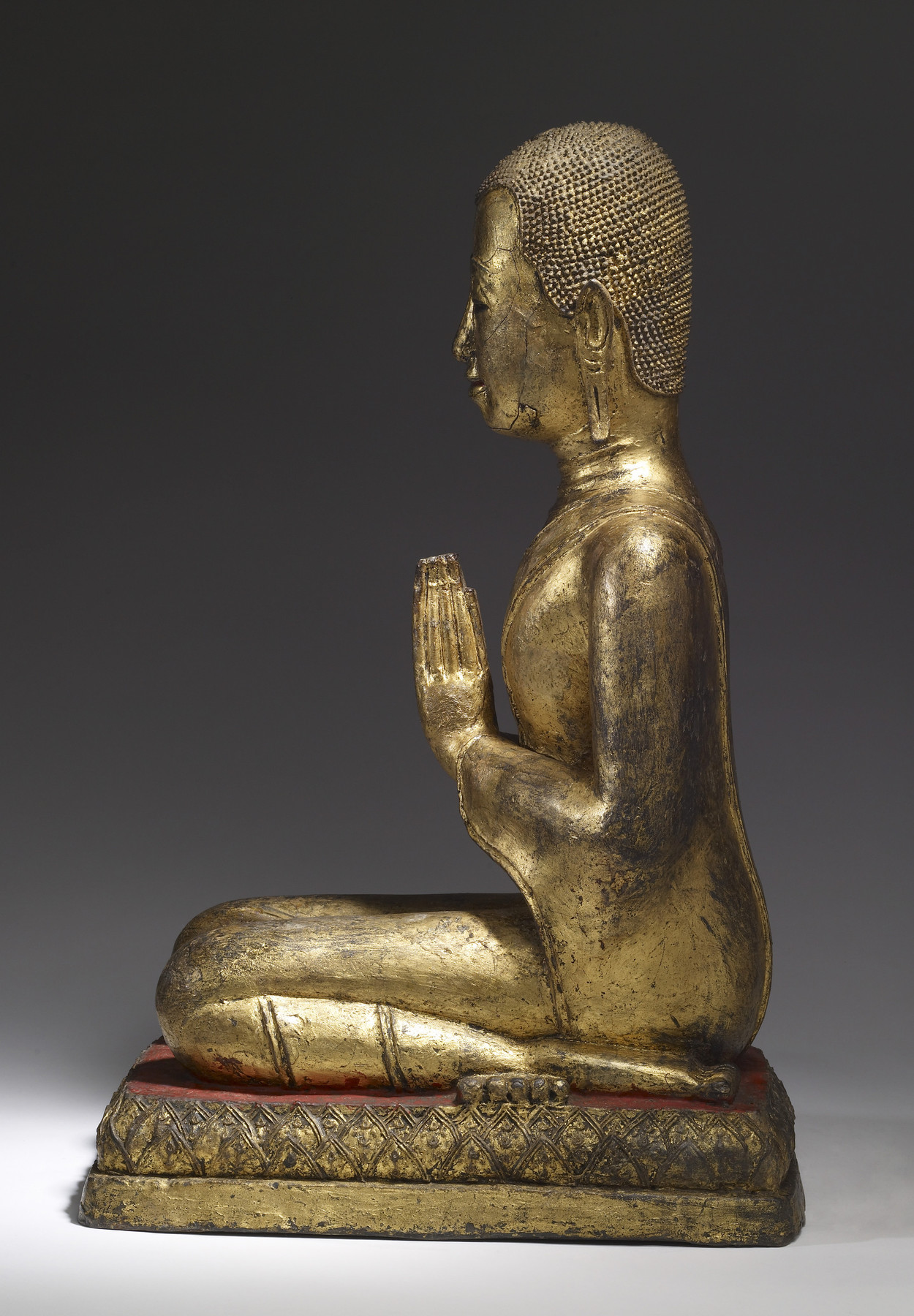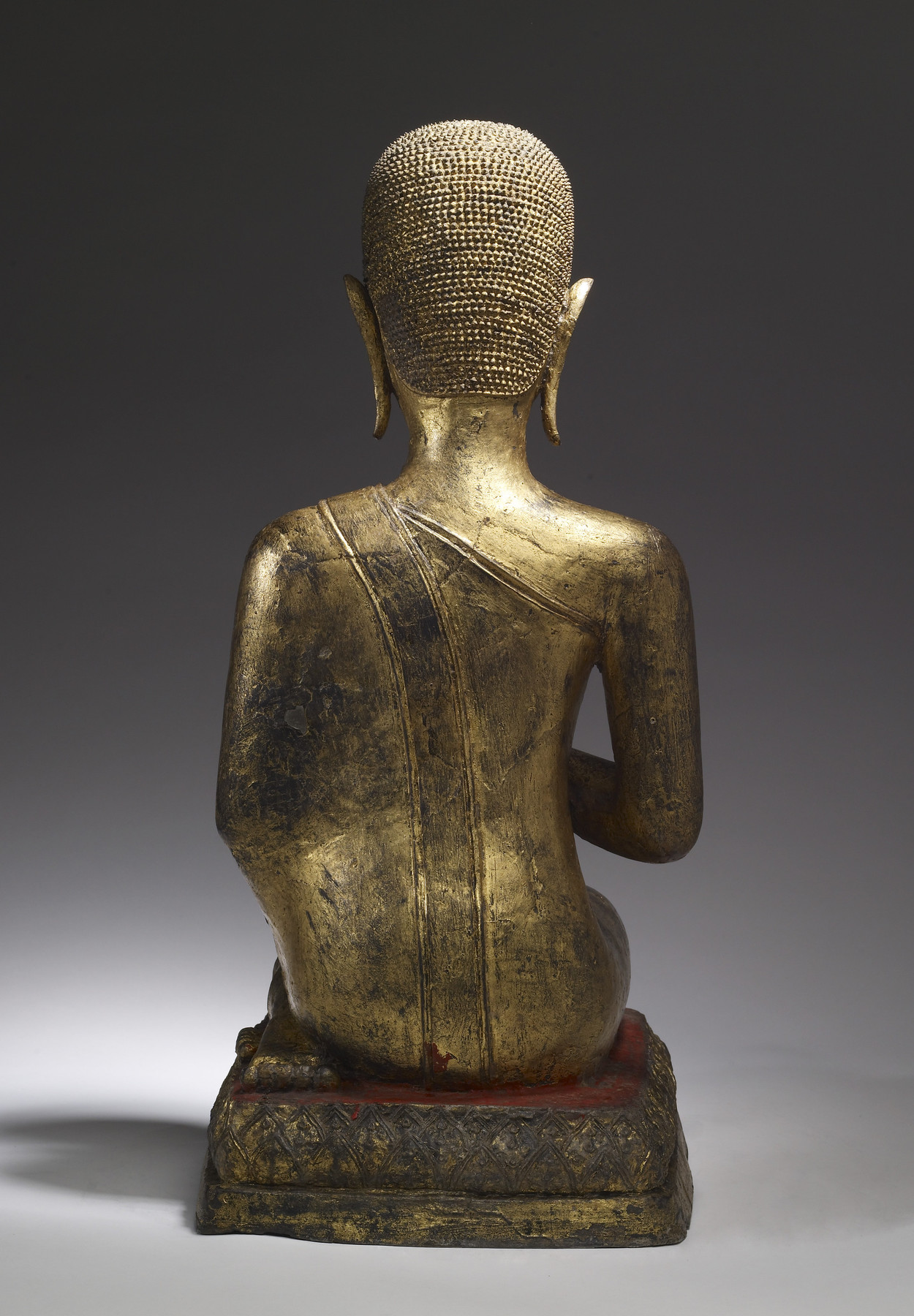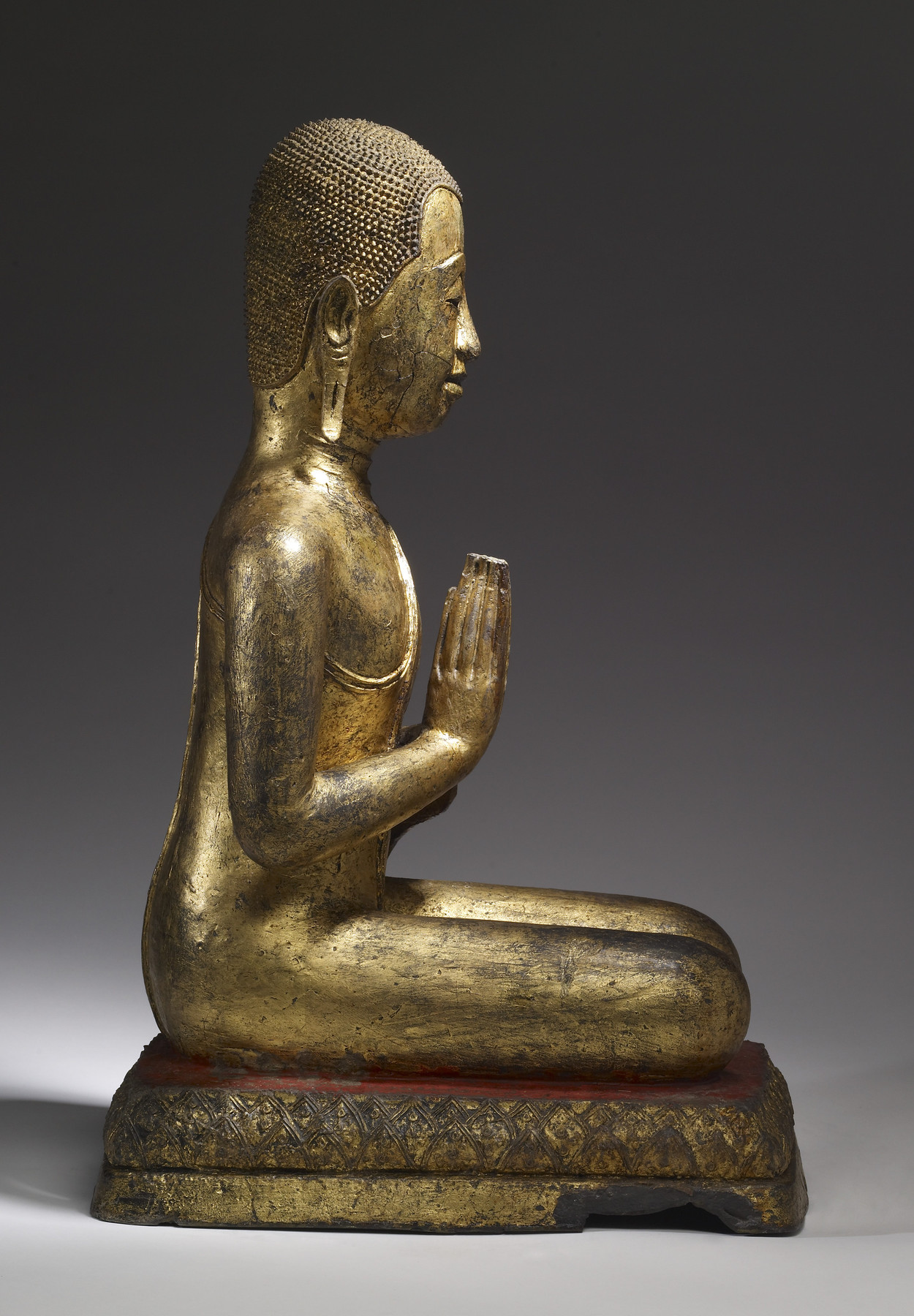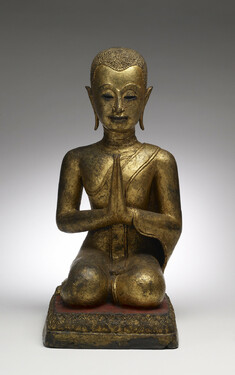Monk Devotee
(Southeast Asia )
This figure of a monk kneels with hands in the "Anjali mudra," the gesture of respect and salutation for devotion to the Buddha. Pairs of these devotees are often intended to represent Sariputta and Moggallana, the Buddha’s two most dedicated disciples, who converted to Buddhism when they heard the Buddhist creed: “Whatever proceeds from causes, their causes have been stated, as also the means of their cessation.”
Sariputta’s knowledge of the Buddha’s teaching ("dharma") was considered second only to that of the Buddha himself. Moggallana was celebrated for his ability to see the unsaid and unknown through mindful clarity achieved by means of meditation. Through their piety, practice, and intellect, the monks became perfected beings known as "arahants."
Provenance
Provenance (from the French provenir, 'to come from/forth') is the chronology of the ownership, custody, or location of a historical object. Learn more about provenance at the Walters.
Doris Duke Charitable Foundation's Southeast Asian Art Collection; given to Walters Art Museum, 2002.
Geographies
Thailand (Place of Origin)
Measurements
H: 21 1/16 x W: 10 7/16 x D: 14 in. (53.5 x 26.5 x 35.5 cm)
Credit Line
Gift from Doris Duke Charitable Foundation's Southeast Asian Art Collection, 2002
Accession Number
In libraries, galleries, museums, and archives, an accession number is a unique identifier assigned to each object in the collection.
In libraries, galleries, museums, and archives, an accession number is a unique identifier assigned to each object in the collection.
54.2991













